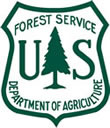Comparing How the Season of Prescribed Burning Affects Herpetofauna and Small Mammal Populations in the Southern Appalachians
In the past, fires set by Native Americans and settlers played a pivotal role in shaping much of the Southern Appalachian forest. Traditionally fire was used by Native Americans to improve travel and game conditions, and later by settlers to improve pasturage for livestock. In the early 20th century, forest fires became viewed as destructive and were suppressed wherever possible thus promoting the buildup of fuels and enhancing the likelihood of wildfire. It has been only recently that the restoration of these disturbance dependent ecosystems with prescribed fire has become a primary management objective of forest managers. The application of fire during different growing seasons is one aspect of prescribed burning that requires further study in regards to its impact on restoring upland hardwood ecosystems, enhancing wildlife habitat, wildlife populations, and species diversity.
My study is focused on comparing the effects of growing season (June-July) versus dormant season (January-March) prescribed burning on the herpetofauna and small mammal populations in the Southern Appalachians. To accomplish this, I have a total of nine sites consisting of two treatments plus one control, with three repetitions each. Each of these units contains two Y-array pitfall traps that are checked daily for herpetofauna during the summer months, and one week of small mammal trapping is conducted using Sherman traps to provide a sample of the population and species diversity of the area.
Currently, I do not know of any study that has been done comparing the season of prescribed burning to changes in wildlife populations and species diversity. Because of this, it is unclear as to what differences, if any, will result from the comparison study of herpetofauna and small mammal populations and species diversity found in each treatment. My hope is that this study will provide more information to the forest service and scientific community as a whole on the effects of the seasonality of prescribed burnings impact on an ecosystems wildlife.









